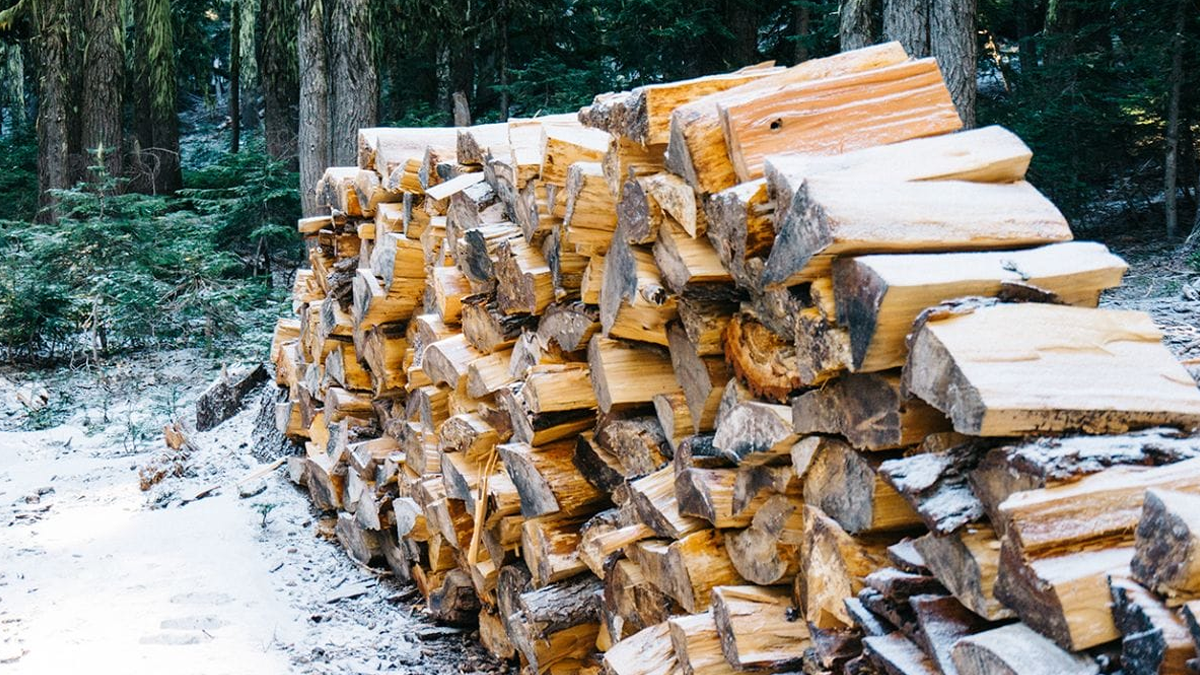
One of the most interesting and rewarding mushroom-growing undertakings is the type that involves those of edible and medicinal importance. Fungi cultivation engages a number of factors contributing to the general success of this; one of them is the kind of wood used as a substrate. Wood is the preferred medium for the growth of many fungal species, most of which are known to grow on specific kinds of woods, and understanding this could boost your cultivation effort in a tremendous way. Below is the information regarding the types of wood that are more appropriate for growing fungi, recognizing their peculiarities and which ones are best suited for certain fungal species.
Understanding Wood as a Substrate
Wood has long been considered a good substrate for mushroom growing because it contains large amounts of lignin, cellulose, and hemicellulose. These are complex carbohydrates that supply the required nutrition for the growth of fungi. Not all types of wood, however, are similar in composition. Wood type impacts the growth rate, yield, and quality of the mushrooms.
Hardwoods vs. Softwoods
Wood is broadly classified into two general categories : hardwoods and softwoods.
Hardwoods are derived from deciduous trees, which lose their leaves annually. They usually are much denser and stronger. Examples include oak, maple, beech, and birch. Softwoods: They come from coniferous trees, otherwise called evergreens, and generally have less density. Examples include pine, spruce, and fir.
Most fungi are biased towards using hardwoods because they have the appropriate density and number of nutrients. Softwoods are generally unsuitable, as they contain resins and other compounds that inhibit the growth of fungi.
Best Wood Types for Growing Fungi
1. Oak (Quercus spp.)
Oak is generally the most widely preferred substrate in mushroom cultivation, particularly for species like Shiitake (Lentinula edodes) and Maitake (Grifola frondosa). Its compact structure and content of nutrients provide for a stable, long-lasting substrate.
Pros: High in nutrients, long-lasting, hosts a wide variety of fungi.
Cons: Difficult to inoculate since it is very dense, may be quite costly.
2. Maple (Acer spp.).
Another very good hardwood for growing fungi is maple. It is especially used for the cultivation of Shiitake and Oyster mushrooms (Pleurotus spp.).
Pros: It contains an enormous amount of sugar, which favors fast growth of the fungus, and it’s relatively easy to inoculate.
Cons: Slightly less hard than oak, can be more prone to contamination.
3. Beech (Fagus spp.)
Beechwood is very popular among mushroom growers due to its fine grain texture, making it a perfect substrate for many varieties of mushrooms, including Shiitake and Oyster mushrooms.
Advantages: Very fine texture, turns over nice mycelium growth, relatively easy to find.
Disadvantages: More subject to decay than oak, substrate must be regularly checked up for contamination.
4. Birch (Betula spp.)
A hardy hardwood, birch colonizes many species of fungi, including Chaga (Inonotus obliquus) and Oyster mushrooms.
Pros: Easy to innoculate, rapid mycelium colonization.
Cons: Decays relatively quickly, sometimes requires supplementation for optimal growth.
5. Alder (Alnus spp.)
Alder wood is certainly one of the top choices in Europe for growing oyster mushrooms and other gourmet fungi. Compared to other hardwoods, it is really soft, which allows for easy penetration of mycelium.
Pros: Easy to inoculate, supports rapid growth, readily available in certain regions.
Cons: It decays quickly and may not support as much flushes as other denser woods.
6. Poplar (Populus spp.)
One of the most commonly used woods for growing Oyster mushrooms is Poplar. This is because it is relatively easy to find and colonizes easily.
Pros: Readily available, fast mycelium colonization, inexpensive.
Cons: Weaker wood, short-lived, may need frequent replacing.
Factors to Consider When Choosing Wood
There are several factors to be considered when choosing the wood to be used in mushroom cultivation. These include:
- Freshness: Freshly cut wood should generally be used, as this is moister with less contamination.
Logs are supposed to be about 3-8 inches in diameter and 3-4 feet long, which makes them easier to handle and colonize. - Age and condition: Older wood that is decaying will have competing fungi and insects. Wood freshly cut or recently felled is preferred.
- Moisture content: Correct moisture levels are very essential for the mycelium to grow. Wood is supposed to soak or at least have water sprayed as frequently as possible to maintain appropriate moisture.
Preparation and inoculation
1. Cutting and soaking
Chopping logs during the dormant season—which is from late fall to early spring—ensures that the trees’ sap content is low. This stage ensures an increased concentration of nutrients with reduced chances of sugar, hence reducing the risk of contamination.
Soak the log in water for 24-48 hours to increase its moisture content. This is very important for dry logs and those that are kept for some time.
2. Drilling and Inoculating
Using an electric drill with 1″ diameter drill bit, make 1-1.5 inches deep holes along the log length, 6-8 inches apart. Fill the holes with mushroom spawn and seal the hole entrance with wax to prevent contamination.
3. Incubation
Lay the inoculated logs in a shaded area with good air circulation and maintain humidity. This can be managed by covering the tops with a tarp or shade cloth to keep it moist. The logs are watered regularly to keep them most humid.
Conclusion
The choice of wood type is very important in successful fungi cultivation. Some of the best woods available for mushroom growing are oak, maple, beech, birch, alder, and poplar, each of which has its specific benefits and challenges. Knowing the preferences of the different species of fungi and the peculiar properties of diverse wood types can help you optimize your mushroom cultivation and yield bountiful harvests. Be it that you’re a hobby cultivator or a commercial producer, the type of wood substrate to be used will severely affect the quality and quantity of your mushrooms.







